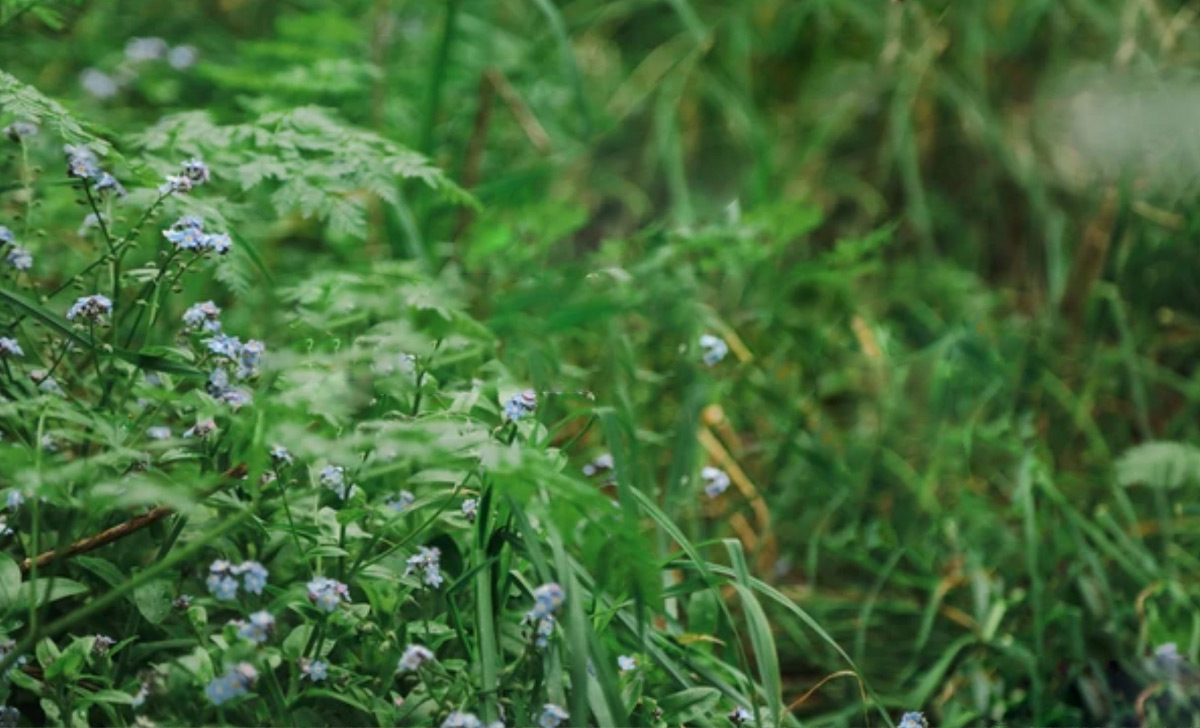When natural ecological systems are disturbed, it activates specific recovery processes which can send weed growth into overdrive. Knowing this, it’s no surprise that weeds commonly affect revegetation projects; however, with an understanding of three key concepts in soil biology and the right approach to vegetation, it’s possible to keep weed growth under control.
Symbiotic relationships
Most soil fungal species form a symbiotic relationship with plants, providing essential minerals, nutrients and water in return for plant root exudates. However, when living plants are removed, whether by machinery or herbicides, the soil biology food supply system is disconnected.
The soil microbiome
The act of disturbing (digging up) soil changes the soil microbiome and destroys the fungal hyphae (mychorizae) which is critical to plant and soil health. This in turn creates soil conditions that generally favour bacterial dominance in the short to medium-term, altering the ratios of minerals, carbon, nitrogen and oxygen as well as the soil moisture content. This can accelerate the growth of weeds and other undesirable species which typically thrive in unbalanced soil conditions.
Carbon consumption
In a bacterial-dominant state, soil targets organic matter – decaying plant and animal material – as an energy source which eventually consumes most of the soil carbon stored in the soil, a trend seen on many sites prior to the beginning of the revegetation process.
During the soil carbon consumption phase, all locked-up carbon minerals are made water-soluble or plant-available in a process known as nutrient mineralisation and mobilisation.
This process is associated with a range of side effects, including:
- Increased susceptibility to nutrient leaching, volatilisation and mineral lockup.
- Soil conditions favouring one dominant bacterial species, resulting in increased weed seed germination and establishment.
- Increased soil compaction and reduced water penetration.
- Diminished soil structure. This increases soil bulk density and can lead to slumping with an increased risk of erosion.
- Mineral imbalances that cause ineffective revegetation seed strike and premature plant maturity.
- Reduced water-holding capacity in the soil.
- Shallow-rooted vegetation establishment. This makes plants vulnerable to water stress.
- Nutrient availability is also subject to factors such as climatic conditions and the chemical and physical characteristics of soil. The availability of high quantities of soluble nutrients sets off signals between the soil biology (predominantly bacteria species) and the seed bank in the soil, activating the germination of undesirable plant species or weeds.
The seed strike and establishment rates for weed species can be influenced by a range of factors, including:
- Overall soil fertility and organic carbon levels prior to disturbance.
- Introduced soil cultivation and amelioration practices, such as liming, gypsum and or organic amendments and other soil conditioners.
- Revegetation management practices – in particular, the rate of additional water-soluble fertiliser during the program implementation stage.
- Total moisture precipitation during this recovery period.
- Soil bulk density or compaction levels.
While weed species establishment is part of a natural recovery process, infestation levels vary from site to site.
The impact of weed species
While the growth of weed species can have negative outcomes for desired plant species, it can also benefit soil in a number of ways. Weed species can help balance soil by effectively utilising excess plant-available and/or water-soluble nutrients. They can also target specific nutrient imbalances and improve mineral availability levels (a process known as bioremediation), or reduce the availability of less desirable minerals like heavy metals (phytoremediation).
Weed species also develop strong, fibrous root systems which hold soil particles together, minimising erosion, breaking up compacted soil layers and ultimately improving moisture penetration and preservation.
The natural succession phase of plant species on a revegetation project often occurs in three parts as follows:
- Phase one: cover crops and weed species.
- Phase two: intermediate grass species.
- Phase three: longer term species native grasses and trees.
How to minimise detrimental weed infestation on a revegetation project
Success in minimising weed infestation comes down to two main factors. The first is the preparation of a soil remediation and fertilisation program that will not induce or enhance weed species seed strike and establishment. Typically, non-water soluble derived fertilisers should be used at rates that allow for effective cover crop establishment, leading to natural succession phase development into pasture grasses and then long-term native plant species.
Secondly, where possible, it’s important to avoid using high volumes of soil conditioning agents like pasteurised compost, lime and gypsum along with water-soluble fertiliser.
How to manage a weed-stricken revegetation project
In the worst-case scenario, where weeds have already overtaken your project, begin the treatment process. The best approach is to mix an appropriate herbicide according to the manufacturer’s instructions and spot spray the affected area, taking care not to harm established native or desired plant species.
Alternatively, if the weed species are not noxious, the best option may be to allow the natural system and native plant species to naturally suffocate the weed species over time. As most weed species are annuals or short-lived perennials, they will die off of their own accord in an effectively conditioned soil.
